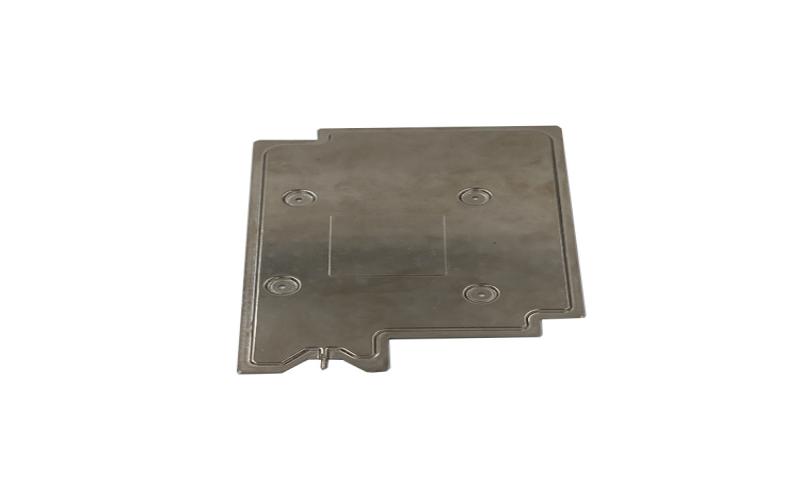The Use of Vapor Chambers for Thermal Management: A Comprehensive Guide
Thermal management is a critical aspect of various industries, including electronics, aerospace, and automotive. As electronic devices become smaller and more powerful, dissipating the heat generated by their components becomes increasingly challenging. One innovative solution that has gained popularity in recent years is the use of vapor chambers. In this article, we will explore what vapor chambers are, how they work, and the numerous benefits they offer in thermal management.
1. Understanding Vapor Chambers
Vapor chambers, also known as heat pipes or heat spreaders, are sealed containers filled with a working fluid, typically water or a refrigerant. They consist of two main components: a flat envelope and a wick structure. The envelope is usually made of copper or aluminum and contains the working fluid in a saturated state. The wick structure, located inside the envelope, facilitates the movement of the working fluid.
2. How Vapor Chambers Work
When heat is applied to one area of the vapor chamber, the working fluid in that region evaporates and turns into vapor. The vapor then moves towards the cooler regions of the chamber, where it condenses back into liquid state, releasing the stored heat. This cycle continues as long as there is a temperature gradient within the vapor chamber, effectively transferring heat from the hot spot to the cooler areas.
3. Enhanced Heat Spreading
One of the primary advantages of vapor chambers is their ability to spread heat more efficiently compared to traditional cooling methods. The high thermal conductivity of the working fluid allows for rapid heat transfer across the entire surface of the vapor chamber. This uniform distribution of heat minimizes hot spots and prevents localized overheating, enhancing the overall thermal performance of the system.
4. Improved Heat Dissipation
Vapor chambers significantly improve heat dissipation by increasing the effective surface area available for heat transfer. The flattened shape of the vapor chamber allows it to be directly attached to heat-generating components, such as CPUs or GPUs in electronic devices. This direct contact ensures efficient heat transfer, reducing the reliance on bulky heat sinks and improving the overall thermal efficiency of the system.
5. Compact and Lightweight Design
Compared to traditional cooling solutions, vapor chambers offer a more compact and lightweight design. Their thin profile and flexibility make them ideal for applications where space is limited, such as laptops, smartphones, or slim electronic devices. The reduced weight and size contribute to improved portability and overall product aesthetics.
6. Thermal Management in Electronics
In the electronics industry, efficient thermal management is crucial for maintaining the performance and reliability of electronic components. Vapor chambers play a vital role in dissipating heat generated by high-power devices, such as gaming consoles, servers, or graphics cards. By effectively cooling these components, vapor chambers help prevent thermal throttling, system failures, and premature component degradation.
7. Aerospace Applications of Vapor Chambers
The aerospace industry also benefits from the use of vapor chambers in thermal management. Aircraft engines generate substantial amounts of heat, and efficient cooling is essential to ensure optimal performance and safety. Vapor chambers can be integrated into the engine design, allowing for effective heat transfer and dissipation. They help maintain stable operating temperatures, reducing the risk of engine overheating and potential malfunctions.
8. Automotive Cooling Solutions
In the automotive sector, vapor chambers are increasingly being utilized for advanced cooling solutions. Electric vehicles, in particular, generate significant heat due to their high-power batteries and electric motors. Vapor chambers offer an efficient method for cooling these components, improving their longevity and overall performance. They also contribute to increasing the driving range of electric vehicles by preventing thermal degradation.
9. Medical and Industrial Applications
Vapor chambers find applications beyond electronics and aerospace, extending to medical and industrial sectors. Medical equipment, such as MRI machines or laser systems, often require effective cooling to maintain precise operating temperatures. Industrial machinery, such as power generators or manufacturing equipment, also benefit from the superior heat transfer capabilities of vapor chambers. Their versatility makes them a valuable tool for thermal management in various fields.
10. Future Trends and Advancements of Vapor Chambers
As technology continues to advance, so does the need for efficient thermal management solutions. Vapor chambers are expected to play a significant role in meeting these demands. Ongoing research focuses on enhancing the performance and reliability of vapor chambers, exploring new materials, and improving manufacturing processes. These advancements will further expand the range of applications and solidify the position of vapor chambers as a key tool in thermal management.

